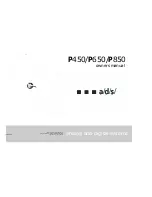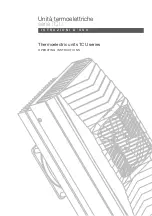
4
DCP-26
Productcode: D2084
Important:
The manufacturer will not accept liability for any resulting damages caused by the non-observance of
this manual or any unauthorized modification to the system.
Never let the power-cord come into contact with other cables! Handle the power-cord and all
connections with the mains with particular caution!
Never remove warning or informative labels from the unit.
Never use anything to cover the ground contact.
Do not insert objects into air vents.
Do not connect this system to a dimmer pack.
Do not switch the system on and off in short intervals, as this would reduce the system’s life.
Only use system indoor, avoid contact with water or other liquids.
Avoid flames and do not put close to flammable liquids or gases.
Always disconnect power from the mains, when system is not used. Only handle the power-cord by
the plug. Never pull out the plug by tugging the power-cord.
Make sure you don’t use the wrong kind of cables or defective cables.
Make sure that the signals into the mixer are balanced, otherwise hum could be created.
Make sure you use DI boxes to balance unbalanced signals; All incoming signals should be clear.
Make sure that the available voltage is not higher than stated on the rear panel.
Make sure that the power-cord is never crimped or damaged. Check the system and the power-
cord from time to time.
Avoid flames and do not put close to flammable liquids or gases.
Before connecting or disconnecting the power cord, make certain the ON / OFF switch is in the OFF
position.
Before switching on or off make certain the sound system’s amplifiers are off or turned down: this will
avoid signal peaks, which are annoying and sometimes dangerous (particularly for speaker
enclosures).
Avoid installing your equipment very near radio or TV sets, mobile phones, etc., as these can cause
RF (radio frequency) interference.
When connecting the other parts of your sound system, watch out for the so-called “ground loops”.
The best way (even if not always feasible) to avoid ground loops is to connect the electric ground of
all the equipment to a single central point (“star” system). In this case, the central point can be the
mixer.
To avoid or solve hum and buzzing troubles, try different combinations of lifting grounds on units that
are supplied with ground lift switches or make sure all chassis are connected to earth ground, either
through the A.C. power cord ground or by the front panel rack mount screws.
Before changing your grounds around, always turn your amplifiers down.
Keep this user’s manual for future consultation. Also remember that the device will get a better price
on the secondhand market if (as well as being in good condition) it has its original documentation
and packaging.
Always operate the unit with the AC ground wire connected to the electrical system ground.
Do not drive the inputs with a signal level bigger, than required to drive the equipment to full output.
Please turn off the power switch, when changing the power cord or signal cable, or select the input
mode switch.
Sometimes, when you want to send one signal to more than one amplifier, you should use a signal
distributor.
Extreme frequency boosts in connection with a high input signal level may lead to overdriving your
equipment. Should this occur, it is necessary to reduce the input signal level by using the INPUT
control.
To emphasize a frequency range, you don’t necessarily have to move its respective sliding control
upward; try lowering surrounding frequency ranges instead. This way, you avoid causing the next
piece of equipment in your sound path to overdrive. You also preserve valuable dynamic reserve
(“headroom”)
For replacement use fuses of same type and rating only.
Prevent distortion! Make sure that all components connected to the DCP-26 have sufficient power
ratings. Otherwise distortion will be generated because the components are operated at their limits.
Avoid ground loops! Always be sure to connect the power amps and the mixing console to the
same electrical circuit to ensure the same phase!
Summary of Contents for DCP-26
Page 35: ...34 DCP 26 Productcode D2084 Notes...
Page 36: ...2013 DAP Audio...





































